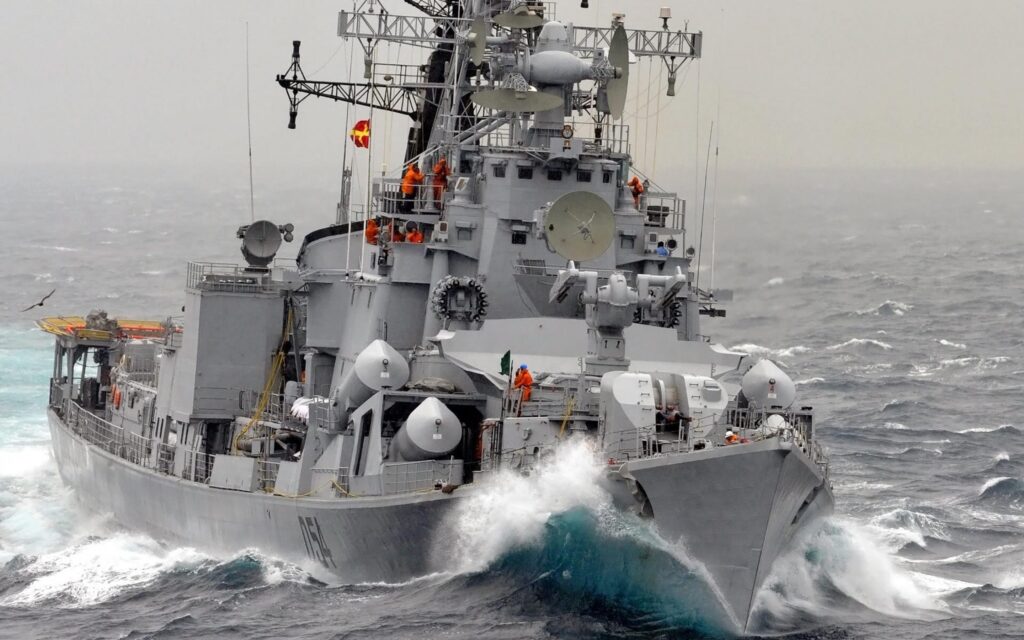Future ships of the Indian Navy: Best NAVY Coaching in Lucknow, India | Warriors Defence Academy Lucknow
Future ships of the Indian Navy
Future ships of the Indian Navy: With a long coastline of more than 7,800km, the Indian Navy faces the challenge of protecting the country’s maritime interests at all times.
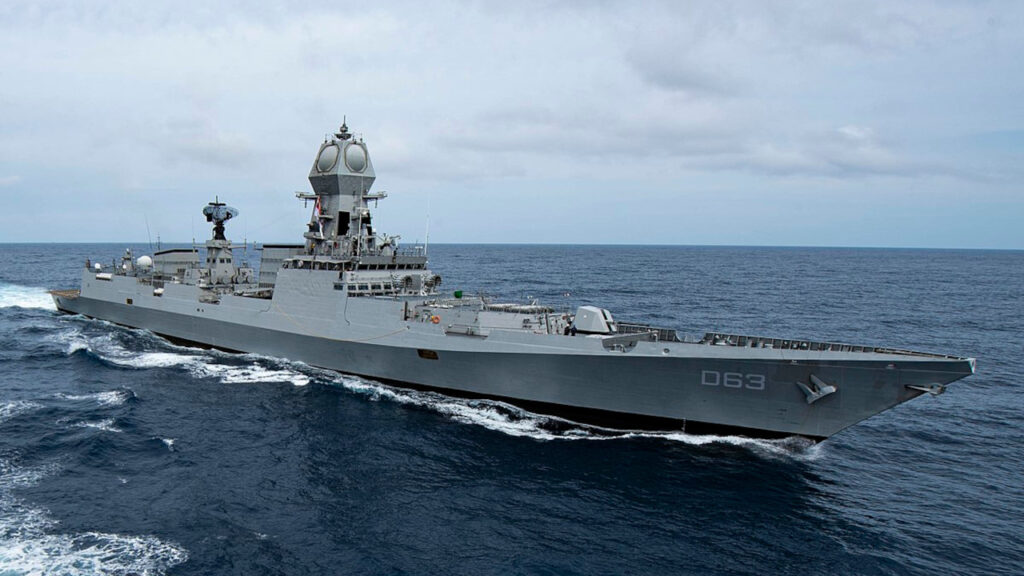
INDIAN OCEAN (Nov. 18, 2020) The Indian Navy destroyer INS Kolkata steams alongside the guided-missile destroyer USS Sterett (DDG 104) during Malabar 2020. Malabar 2020 is the latest in a continuing series of exercises that has grown in scope and complexity over the years to address the variety of shared threats to maritime security in the Indo-Pacific where the U.S. Navy has patrolled for more than 70 years promoting regional peace and security. Nimitz Carrier Strike Group is currently deployed to the 7th Fleet area of operations in support of a free and open Indo-Pacific. (U.S. Navy photo by Mass Communication Specialist Seaman Drace Wilson)
Share Article
With a long coastline of more than 7,800km, the Indian Navy faces the challenge of protecting the country’s maritime interests at all times.
The navy continues to add key assets to its fleet, based on its strategic requirements and to maintain its dominant position as one of the major naval forces in the world.
Naval Technology details some of the major future ships of the Indian Navy.
Aircraft carriers
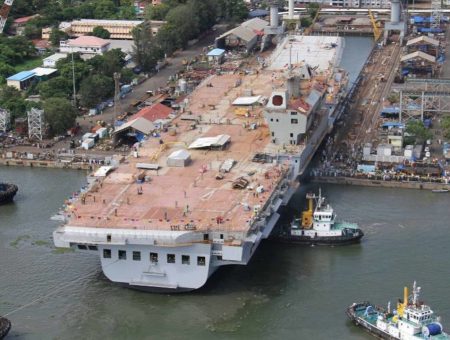
Vishal will be the most expensive defence platform of India, subject to funding approval from the Ministry of Defence (MoD). Still, in its conceptual phase, the proposed aircraft carrier will join INS Vikramaditya and INS Vikrant, the latter of which is expected to undergo sea trials by the end of 2020. Vishal will be the second indigenous aircraft carrier after Vikrant.
With three carriers, the Indian Navy will have the capability to ensure the availability of at least two carriers at sea, while the other undergoes overhaul, repair and maintenance in the yard. Vikrant will be developed with catapult assisted take-off but arrested recovery (CATOBAR) capability and an electromagnetic launch system (EMALS). Its advanced catapults will enable the launch of heavier and larger aircraft. Although it was previously planned to be nuclear-propelled, the Indian Navy scrapped those plans.
The third aircraft carrier’s significant $7bn cost estimate (excluding the cost of fighter jets) and budget woes have, however, impacted the progress of the development. Vikrant is expected to enter service in the 2030s.
INS Vikrant, on the other hand, has completed basin trials at Cochin Shipyard Limited’s (CSL) facility in Kochi in November 2020. The 262m-long aircraft carrier has a displacement of 40,000t and is expected to carry up to 40 fighter aircraft. Equipped with a short take-off but arrested recovery (STOBAR) mechanism with a ski-jump, it is anticipated to join the Indian Navy’s fleet by the end of 2021 or early-2022.
Submarines
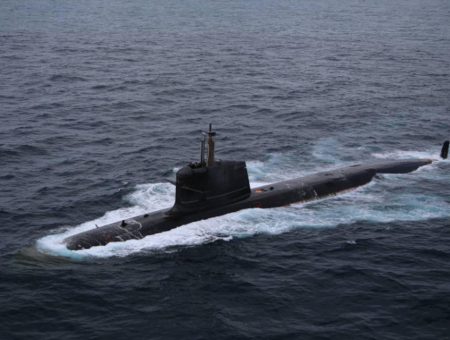
Future ships of the Indian Navy: Best NAVY Coaching in Lucknow, India | Warriors Defence Academy Lucknow
The Indian Navy will procure six diesel-electric submarines under the Project-75 India (Project-75I or P75I) programme worth Rs550bn ($7.51bn). Being developed as the successor of the Project 75 Kalvari-class programme, Project-75I will deliver a new class of attack submarines equipped with advanced air-independent propulsion systems that will allow them to stay submerged for a longer duration and ensure increased operational range.
The advanced P75I submarines will be built in India through technology transfer under the Indian Government’s Strategic Partnership model, which encourages the participation of domestic private firms in defence to boost the country’s defence manufacturing capabilities. The government shortlisted two domestic firms, namely Mazagon Dock Shipbuilders Limited (MDSL) and Larsen & Toubro, and five foreign original equipment manufacturers in January 2020.
The programme requires the two Indian firms to work in collaboration with one of the foreign firms, including Russia’s Rubin Design Bureau, Germany’s ThyssenKrupp Marine Systems, France’s Naval Group, South Korea’s Daewoo Shipbuilding & Marine Engineering, and Spain’s Navantia. Technical and financial bids for the project are anticipated to be submitted by the end of 2020.
The Indian Navy plans to acquire a total of 24 submarines, including six nuclear-capable submarines. A project to build a new class of 13,500t ballistic missile submarines is also underway. Known as S-5, the submarines will be twice the weight of the Arihant-class submarines and have the capacity to carry 12 nuclear missiles, according to Indian media. The final design work for the submarine is ongoing. Furthermore, the proposed $17bn Project 75 Alpha nuclear-powered attack submarines (SSN) programme is progressing, with the preliminary design phase completed as of February 2020.
Frigates
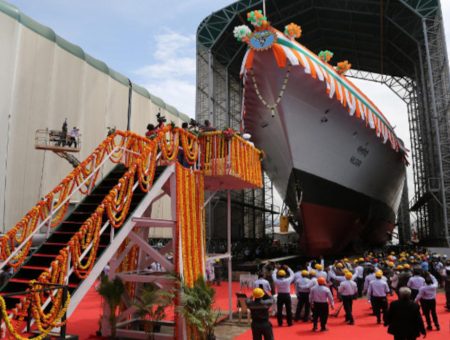
Future ships of the Indian Navy: Best NAVY Coaching in Lucknow, India | Warriors Defence Academy Lucknow
The Project 17A programme, which will deliver seven advanced frigates, was approved by the Indian Government in February 2015 to enhance the Indian Navy’s combat capability. MDSL will construct four Nilgiri-class frigates while GRSE will build the remaining three, under the project worth approximately Rs500bn ($7bn). The lead ship of the class, INS Nilgiri, was launched in September 2019 while the keel of the third frigate of the class was laid in September 2020.
Based on the Project 17 Shivalik-class, the stealth frigates will be fitted with weapons, sensors, and an integrated platform management system. The ship will provide significantly improved air defence capabilities due to the integration of the Barak-8 surface-to-air missile that can be fired from a vertical launch system with the capability to launch multiple missiles simultaneously. It will also be armed with BrahMos, the world’s fastest supersonic cruise missile.
A larger 127mm-calibre main gun will offer enhanced range while the multi-function surveillance track and missile guidance radar (MF-STAR) will enable the detection of multiple air and surface stealth targets at the same time. The 6,670t guided-missile frigate will be powered by two MAN Energy Solutions’ diesel engines and two General Electric LM2500 gas turbines. It will have a top speed of 28k while the range is expected to be 5,500nm.
Support vessels
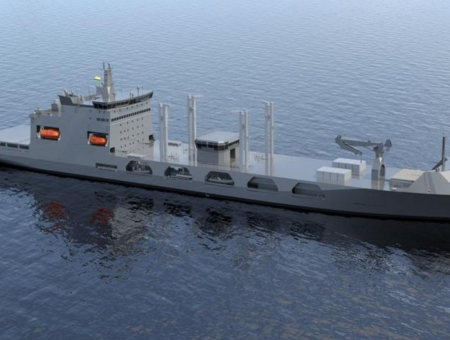
Future ships of the Indian Navy: Best NAVY Coaching in Lucknow, India | Warriors Defence Academy Lucknow
The Indian Ministry of Defence will acquire five new fleet support vessels for the Indian Navy. A $2.3bn contract was signed between Hindustan Shipyard Limited (HSL) and the TAIS consortium between five Turkish shipbuilders for the collaboration to design and build the vessels.
The first ship will take four years to complete, while the remaining will be built ten months apart from each other. To be built indigenously through technology transfer from the Turkish consortium, the fleet support vessels will be used to transport food and ammunition for replenishment. Anadolu Shipyard, which is part of TAIS, will provide design and technical support to HSL for building the 45,000t ships.
India also approved the procurement of six next-generation offshore patrol vessels (NGOPVs) for the Navy in August 2018. Each NGOPV will displace approximately 2,500t and carry more than 150 people, including 20 officers and 130 sailors. To be deployed both in blue and littoral waters, the vessels would be used for the protection of offshore assets, search and seizure operations, surveillance missions, and maritime interdiction.
Anti-submarine warfare shallow watercraft (ASW SWC) ships
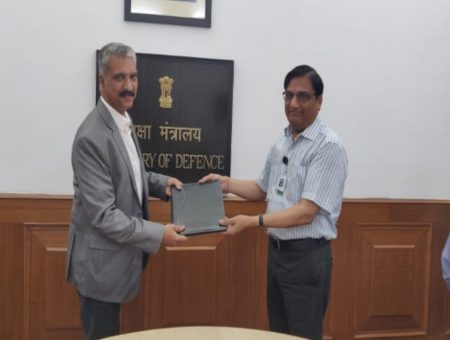
The Indian Navy placed contracts with CSL and Garden Reach Shipbuilders & Engineers (GRSE) for the construction of 16 anti-submarine warfare shallow watercraft (ASW SWC) ships in May 2019. CSL and GRSE will build eight ships each, with deliveries expected to start from 2022. The ASW SWC warships will have lower draught and be incorporated with indigenous integrated platform management systems, propulsion, and auxiliary equipment.
Being procured under a $1.88bn project, the ASW ships will boost the Indian Navy’s coastal shallow-water anti-submarine warfare capability. The ships will provide coastal subsurface surveillance and mine-laying capabilities and support submarine-hunting operations in shallow waters.
The ASW SWC will be 70m-long with a displacement of 700t. Its stealthy design will offer a low acoustic and infrared signature. The warship is expected to be equipped with an ASW combat suite, including hull-mounted sonar, low-frequency variable depth sonar (VDS), torpedo tube launcher, rocket launcher, and fire control system, as well as a remote control gun with optronic control.





